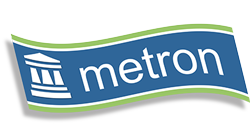Gartner identified their Top 10 Strategic Technology Trends for 2015 at their October Symposium in Orlando. See http://www.gartner.com/newsroom/id/2867917.
Knowing how capacity management people just love statistics, I thought I’d offer a percentage relevance/impact on capacity management of the 10 items from Metron’s perspective. What can’t be denied is that dependent on your industry, any or all of these will impact you at some stage if you are a capacity manager.
Top 10 Item Capacity Management Impact 2015 Trend
Computing Everywhere 100% à
Whether it is providing support for mobile devices with our athene® software or helping people handle the mass of data being generated as their own industry makes increasing use of them, this is definitely a major direction for Metron.
Internet of Things 20% ↑
Some impact so far as our clients have had to deal with increasing volumes of data, predominantly due to Cloud based implementations. This will only increase as the Internet of Things becomes more pervasive, for example the predicted rapid growth in pay-per-use applications.
3D Printing 5% ↑
With shipments of 3D printers expected to double in 2016, this is clearly a major growth area. For Metron, we are starting to see the impact on applications with embedded links to 3D printing increasing the processing load on environments further.
Advanced, pervasive and invisible analytics 50% ↑
More and more systems, more and more data, means analytics needs to get smarter. Research and development for Metron continues to focus on new ways to intuitively analyze and use the ever- increasing pool of data available to capacity managers.
Context Rich Systems 20% ↑
New research and development in the works includes development of context-sensitive planning techniques to enable capacity planning to evolve with the emerging world rapid deployment, rapid change systems.
Smart machines 10% ↑
The smarter the machine the greater the impact if it fails. Even with ever cheaper commoditized components, manufacturing will continue to want to optimize costs. Ensuring just the right capacity is available to each component of your smart car or helpful household robot will be essential to enable producers to maximize profits and keep feeding that next generation of R&D.
Cloud/Client Computing 100% à
Already a significant element of life for an capacity Manager or Capacity Management software provider. Stories already circulate of overspend and uncontrolled spend on Cloud systems. Over time, businesses will increasingly need capacity management to prevent and remove the waste. For Metron, ever more development effort goes on enhancing the tools available to do this.
Software Defined Application and Infrastructure 50% ↑
Metron moved to the agile principles underpinning SDA and SDI some years ago for our own in- house development, seeing how our software would need to evolve ever quicker in response to changing demands. Work underway now looks to provide the same agile approach to rules and models in our future software to deliver rapid response, self-learning capacity planning and management techniques.
Web-Scale It 20% ↑
Many of our clients are now starting to deploy Cloud style systems pioneered by the likes of Google and Facebook, within their own data centers. For some time past and looking well ahead, Metron has been concentrating software enhancements on ensuring that our software evolves to support evolving data center architectures, while still supporting the traditional implementations that will provide core organization systems for some time.
Risk-Based Security and Self-Protection 5% ↑
With all of Metron’s athene® facilities being increasingly provided as web-based applications, work continues to provide ever-increasing application security, to supplement the sophisticated perimeter security now deployed by all our clients.
We hope all of our clients and friends have a wonderful holiday and we'll see you in 2016.
Andrew Smith
CEO, Metron
